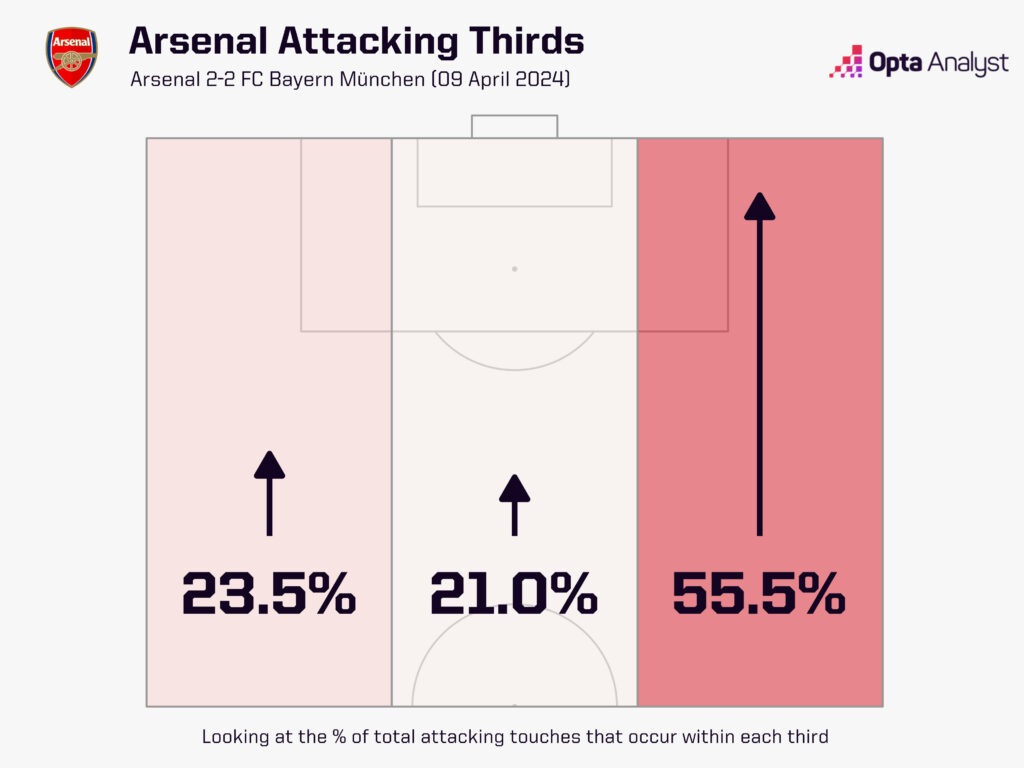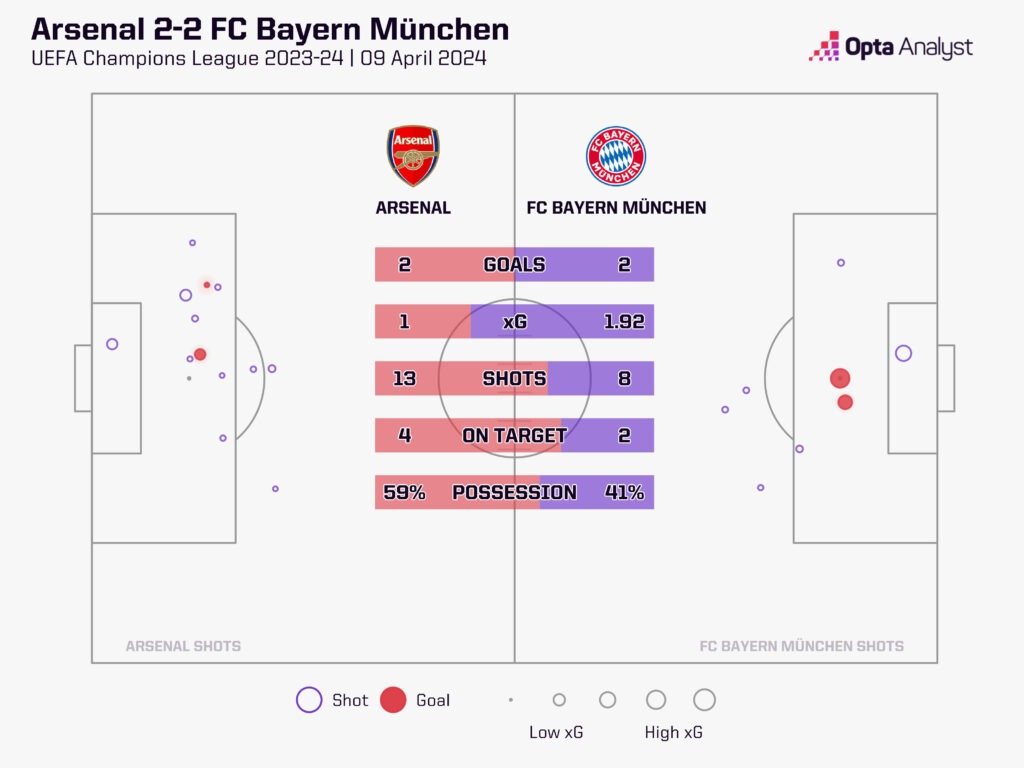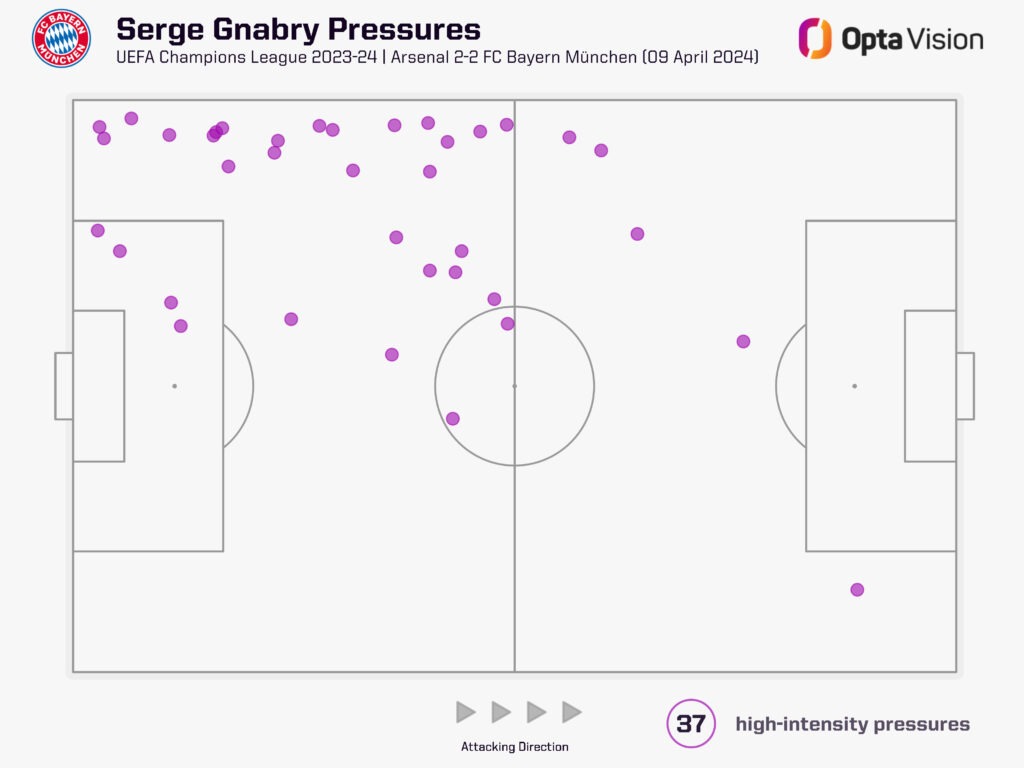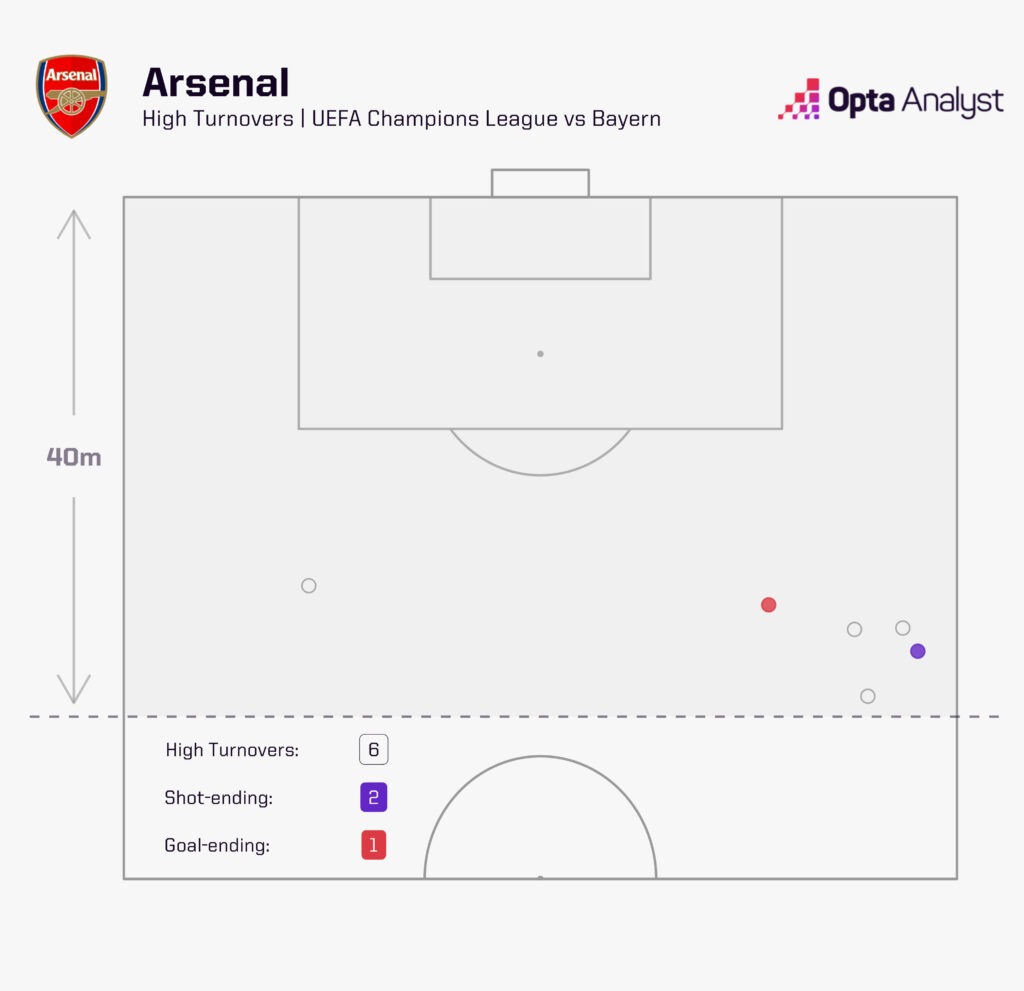Arsenal failed to get the first-leg win many expected of them at home to an out-of-sorts Bayern Munich on Tuesday, but there is still cause for positivity for next week’s return game in Germany.
Despite a relative lack of European pedigree, Arsenal went into their Champions League quarter-final against Bayern Munich as favourites to progress. That’s because Arsenal (zero European Cup or Champions League trophies) are in far, far better form than their German counterparts (six European Cup or Champions League trophies).
But Bayern nearly pulled off an improbable win at the Emirates Stadium. After Bukayo Saka had put the hosts ahead, Bayern turned the game on its head with goals from Serge Gnabry and Harry Kane. Only a late equaliser from substitute Leandro Trossard could rescue a draw for Arsenal.
So, Arsenal head to Munich next week for the return leg needing at least a draw and probably a win to progress to their first Champions League semi-final since 2008-09. They also have history against them, having never made it past Bayern Munich in four previous meetings in the Champions League knockout stages (2004-05, 2012-13, 2013-14 and 2016-17). They have lost 5-1 on their last two trips to the Allianz Arena.
But this time around, things could – and should – be different. Although there will of course be some disappointment that they couldn’t beat an out-of-sorts Bayern side who are clinging onto their last hope of silverware for the season, there is still cause for optimism. Here are four reasons for Mikel Arteta to believe his side can get a win in Germany that eluded them on home soil.
Alphonso Davies’ Suspension
Just nine minutes into the first leg, Bukayo Saka drew a clumsy foul from Bayern left-back Alphonso Davies. It was early on in a big Champions League tie, but the referee did not hesitate to dish out a yellow card as Davies trod on Saka’s ankle. The caution means Davies will miss the return leg in Germany.
On Arsenal’s left side, Gabriel Martinelli – lacking match fitness following a recent foot injury – was peripheral. Whether it was by accident (due to Martinelli’s ineffectiveness) or by design (because Saka is their biggest attacking threat), Arsenal focused a huge proportion of their play down the right flank. At half-time, 61.9% of their attacking touches had come down the right; by full-time that number had dropped to 55.5%, but it was still significantly more than their left (23.5%).

That drop may have come because Davies largely dealt with Saka well for the rest of the game. Despite the winger’s very strong start – shortly after drawing that yellow card he scored the game’s opening goal – Davies recovered and walked the tightrope of being on a caution against one of the world’s best dribblers exceptionally well.
So, his absence is a big deal for the second leg. He is the only member of the Bayern back four who possesses any real pace, and he also provides attacking threat with tireless running up and down the left. He is very comfortable on the ball, too, and on several occasions his composure helped Bayern play out under pressure from an intense Arsenal press.
Bayern have lost 20% of their games when Davies starts this season, compared to 30% without him. They score more goals with him (2.7 per game vs 2.0) and concede fewer (1.2 per game vs 1.4). It’s a simple science as there will be other factors at play, but there’s no doubt they are a weaker unit without Davies. Expect even more play to go through Saka next week, when he’s likely to come up against Raphaël Guerreiro – a decent player but absolutely no Alphonso Davies.
Bayern’s Problems with Possession
At the Emirates, Bayern didn’t shy away from keeping the ball, but they were also happy to go direct. Their goals came from a long ball upfield that preceded a defensive error from Arsenal and a remarkable direct Leroy Sané dribble from his own half. The Germans ended the game with a share of just 40.8% possession.

Thomas Tuchel’s Bayern have struggled to break teams down when they have lots of the ball this season, and many of their worst results have come when they have dominated possession to a significant degree. In fact, they have lost nine of the 27 games in which they have had more than 60% possession this term, but have lost none of the 13 in which they have had under 60% of the ball. Arsenal left space for Bayern to break into in the first leg and the visitors took advantage.
Back on home soil, there will be more onus on Bayern to take the game to Arsenal, and while Arteta’s side are suited to dominating possession, they have also had some success when letting their opponents have the ball, too. They are unbeaten through four Premier League games against Liverpool and Manchester City this season (two wins, two draws) while having no more than 49% possession and as little as 27.5% in the draw at the Etihad. They have lost six out of 20 (30%) competitive games this season with more than 60% possession, compared to two out of 24 (8.3%) with less than 60%.
It may just suit Arsenal to let Bayern have the ball in the return leg, and there may be more chance of that happening at the Allianz.
Serge Gnabry’s Injury
“It’s a hamstring injury. It doesn’t look good for the second leg.” Tuchel’s assessment of the injury that forced Serge Gnabry off the pitch at the Emirates was pretty conclusive. Usually, managers like to wait and see a scan, but Tuchel was adamant the winger, who’s had his fair share of injury problems in the past, would miss the return fixture in Germany.
Although it was Sané who produced most of Bayern’s best and most dangerous moments in the first leg, the willing running of Gnabry on the opposite flank gave them plenty to think about. Nobody, for example, could keep up with him as he raced on to Leon Goretzka’s through ball to score Bayern’s equalising goal.
No starting outfielder had fewer than Gnabry’s 24 touches, but only Martinelli (three) had more than his two shots on the night, despite the fact he went off after 69 minutes. He worked exceptionally hard, diligent with his defensive work, making three clearances (only Eric Dier made more, with 5) and a total of 37 high-intensity pressures on the ball carrier. That was the fourth most on the pitch, behind three players who were out there for the full 90. The positions in which he made these pressures shows just how far back he was willing to work.

The absence of Gnabry and his direct off-the-ball sprints up the pitch will give Arsenal one less thing to worry about in the return leg. Kingsley Coman is a decent replacement, but in his cameo he was far less effective than Gnabry. His injury can only be a positive for Arsenal.
The Knowledge That Bayern Will Give Them Chances
Bayern’s performance on Tuesday gave the impression they had overcome most of their problems. It was a much more assured performance than we have come to expect of Tuchel’s side.
However, there were still more than a few glimpses of their issues, not least when pressed in their own half of the pitch.
Arsenal won the ball within 40m of the Bayern goal line on six occasions in the match, including in the build-up to Trossard’s goal. They will come away from this game knowing that their press – which has led to a Premier League-high 60 shots following a high turnover this season, and seven goals – could be fruitful in the return leg.

After all, only four teams have given up possession within 40m of their own goal more times in the Champions League this season than Bayern (71). Eric Dier’s pass success rate of just 77.1% at the Emirates suggests he could well be the weak link here.
Arsenal can head to Germany next week knowing their opponents will give them chances if they press them effectively. There really is good reason to believe Arsenal can pull off the win they need.
Enjoy this? Subscribe to our football newsletter to receive exclusive weekly content. You should also follow our social accounts over on X, Instagram, TikTok and Facebook.
